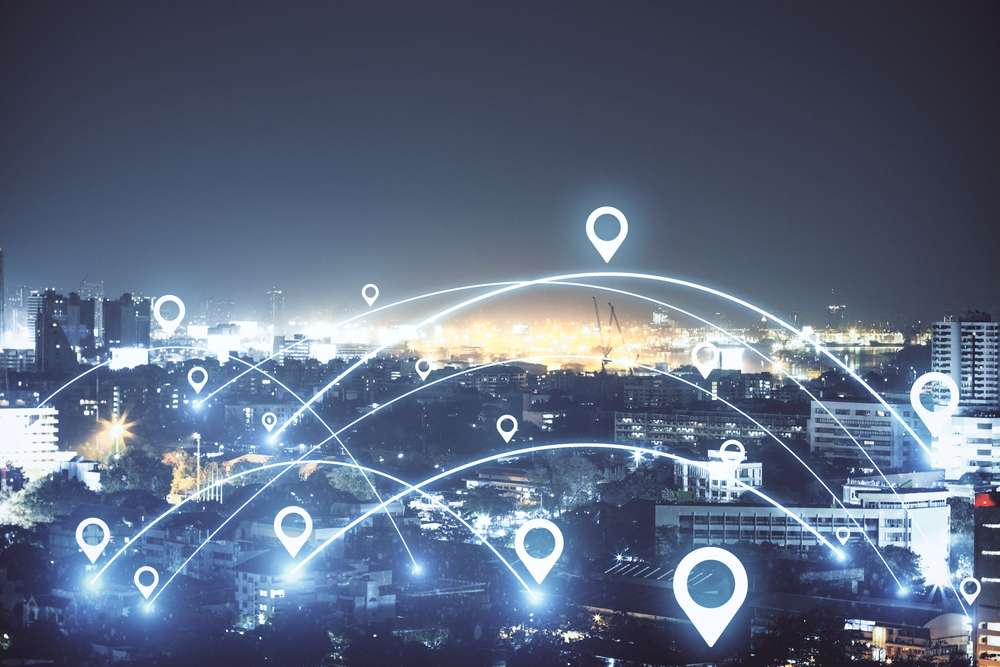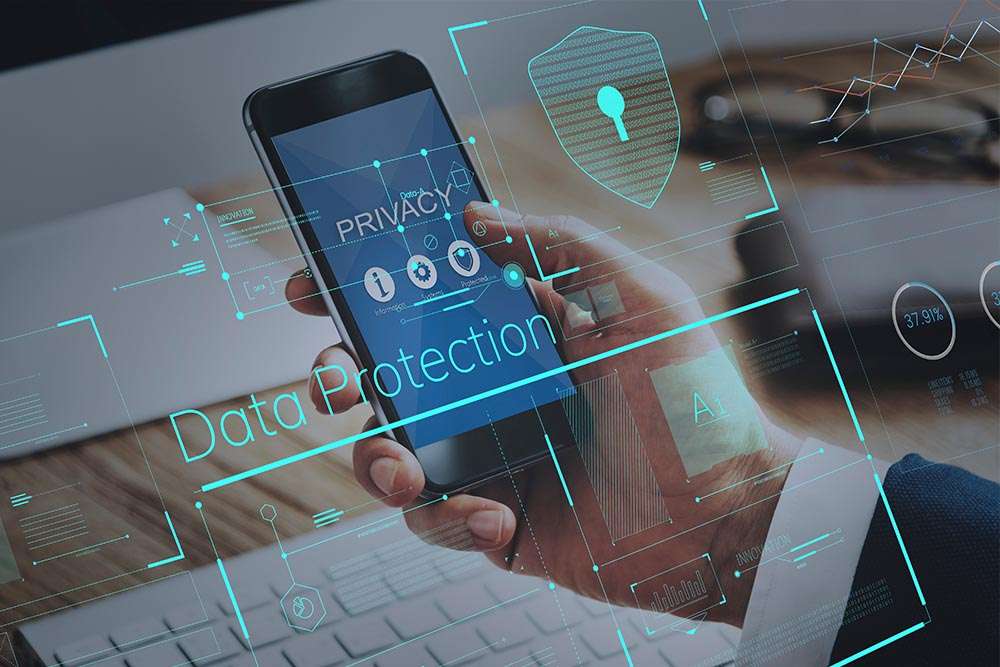
Introduction to Geolocation Data in Learning Assessments
Geolocation data has increasingly become a valuable resource for various industries, as it provides rich insights into people’s patterns, movements, and their interactions with the world. One area where geolocation data has shown significant potential is in learning assessments, where it can be utilized to inform and enhance the scoring process for both in-person and online educational experiences.
Learning assessments are a critical component of the educational process. They allow instructors to gauge a student’s progress, understanding, and skill development in a specific subject or competency. These assessments can take many forms, such as quizzes, tests, projects, and even practical application scenarios. To achieve meaningful and accurate results, educators often rely on scoring rubrics – a set of guidelines that outline the expectations, criteria, and scoring methodologies for a given assessment.
Scoring rubrics can be used to evaluate various aspects of a learner’s performance, including knowledge attainment, critical thinking skills, and engagement in the learning process. However, the traditional scoring rubric approach primarily focuses on students’ direct outputs, such as written responses or exam scores. With the ever-evolving nature of education, incorporating data-driven insights and analytics has become necessary to ensure comprehensive assessments of learners. This is where geolocation data comes into the picture.
Geolocation data refers to the information collected on the geographic position of an individual or device. It can include items such as GPS coordinates, Wi-Fi or Bluetooth signals, and IP addresses. In the context of learning assessments, geolocation data can offer multiple benefits.
Firstly, it enables an enhanced understanding of learners’ engagement and interaction with learning materials, platforms, or physical spaces. For instance, geolocation data can reveal the length of time that students spend in a designated study area or the frequency at which they access certain resources. This information can then inform scoring rubrics by adding a layer of context to the traditional assessment methods.
Secondly, geolocation data can contribute to the personalization of learning experiences. By analyzing location-based data, educators can better understand the unique needs and preferences of learners in different geographic regions. This increased understanding can then have implications on content delivery, resource allocation, and even curriculum design.
Lastly, geolocation data can help improve assessment security. For example, it can be used to verify the locations of students taking online exams or ensure that test-takers are adhering to designated timeframes and testing locations.
Despite these potential benefits, the use of geolocation data in learning assessments also raises crucial questions around privacy and data protection. As educational institutions and professionals explore the possibilities presented by geolocation data in scoring rubrics, they must consider the implications of collecting, storing, and using this information.
Privacy has become an increasingly pressing concern in today’s data-driven world, with concerns ranging from tracking individuals’ movements and activities to the potential risk of sensitive data exposure. In the context of learning assessments, privacy concerns are particularly heightened due to the involvement of minors and the sensitive nature of assessment data.
To navigate these challenges, learning development professionals must strike a delicate balance between leveraging geolocation data to improve assessment methodologies and ensuring the ethical, legal, and responsible use of data. This article seeks to provide guidance and explore best practices for incorporating geolocation data into scoring rubrics, while also addressing the important privacy considerations that must be accounted for along the way.

Understanding Scoring Rubrics
A scoring rubric is a detailed guide for evaluating student performance, which is often used by learning development professionals to assess learning achievements and skill mastery in educational contexts. Scoring rubrics offer an explicit, objective, and systematic approach to assessment, ensuring that evaluations are consistent, transparent, and fair across different learners. This chapter aims to provide an understanding of scoring rubrics, their purpose, benefits, and the potential role of geolocation data.
Fundamentally, scoring rubrics are comprised of two key components: the criteria and the levels of performance. The criteria represent the specific skills, knowledge, or abilities that the learner is expected to demonstrate in a given assessment task. The levels of performance, on the other hand, describe varying degrees of mastery, ranging from novice to expert, and are used as benchmarks for grading student responses. Each level of performance is described using a set of indicators or descriptors, which elucidate the quality and characteristics expected at that level.
Scoring rubrics can be broadly classified into two categories: holistic rubrics and analytic rubrics. Holistic rubrics provide a single score based on an overall evaluation of the student’s work, taking into account all the competencies demonstrated. These rubrics are more applicable in situations where the assessment tasks have a singular focus or target, and where the purpose of the assessment is a general evaluation of a learner’s abilities. Examples of holistic rubrics are commonly found in essay assessments, where an overall score is given based on a comprehensive evaluation of writing quality, grammar, and coherence.
In comparison, analytic rubrics assess and assign scores based on individual elements or criteria within the assessment task. Analytic rubrics are more specific, breaking down the assessment into components, and assigning a score for each criterion separately. This allows for more in-depth and detailed feedback, promoting the identification of areas exhibiting strengths and weaknesses. Analytic rubrics are typically applied when the assessment task is multifaceted, and students are expected to demonstrate a range of competencies. Examples of assessment types employing analytic rubrics include complex research projects, student presentations, or collaborative group activities.
There are several advantages of using scoring rubrics for assessments. Firstly, rubrics provide clear expectations and guidelines for learners about what constitutes high-quality performance, thus allowing them to self-regulate and direct their learning. Secondly, the use of rubrics enhances the reliability of assessments by reducing subjectivity and promoting a standardized evaluation process across different assessors. Thirdly, rubrics facilitate more accurate, objective, and meaningful feedback by pinpointing specific areas to improve within a learner’s work. Lastly, rubrics help save time during the assessment process without compromising on the quality of evaluation, as assessors can quickly refer to the rubric for guidance on performance levels associated with each criterion.
The integration of geolocation data within scoring rubrics offers promising avenues for better understanding the context and relevance of learning assessments. Geolocation data can provide insights into students’ learning environments and resources, their physical accessibility to educational institutions, and potentially varying cultural and regional expectations concerning educational outcomes. In this regard, embedding geolocation data within scoring rubrics could pave the way for more nuanced, personalized, and contextualized assessment practices, which may result in more equitable and just evaluations of learners with diverse backgrounds and experiences.
However, the potential benefits of incorporating geolocation data into scoring rubrics need to be weighed against several critical privacy considerations. Collecting and utilizing geolocation data may put the personal information of learners at risk, with various legal and ethical ramifications. Thus, learning development professionals must be cautious and adhere to best practices concerning the responsible collection, use, and storage of geolocation data while designing and employing scoring rubrics in educational assessments.

Privacy Concerns in Utilizing Geolocation Data
The integration of geolocation data in scoring rubrics within learning assessments has opened a new range of opportunities for creating personalized and context-specific learning experiences for students. However, it is essential to carefully consider the potential privacy issues that may arise with the use of such sensitive information. This chapter delves into the major privacy concerns pertaining to the utilization of geolocation data and emphasizes the importance of addressing these issues in an ethically responsible manner.
One major concern regarding the use of geolocation data is the inherent sensitivity of the information. Geolocation data provides insights into an individual’s whereabouts, which can be used to deduce various private and personal aspects of their lives, such as their home address, places they frequently visit, social patterns, and preferences. This wealth of information, if mishandled or accessed by unauthorized parties, can lead to significant privacy violations and potential harm to the students and their families.
Another privacy concern is the potential for this data to be used in ways that may not be directly related to learning assessments. For example, geolocation data may be used by educational institutions to track attendance, monitor students’ movements, or even shared with external parties, such as marketing organizations or law enforcement agencies. Such practices may infringe on students’ privacy rights and foster a mistrustful learning environment, ultimately leading to negative consequences for both the individual and the institution.
Moreover, the increased reliance on geolocation data for assessment purposes can exacerbate disparities among students. For instance, access to accurate geolocation data may depend on factors such as device availability or internet connectivity. As a result, less privileged students may be disadvantaged if their geolocation data is of lower quality or even unavailable, leading to potential unfairness in assessments based on this information.
Data security is another vital concern in the context of geolocation data usage. Given the sensitive nature of the information, inadequate data protection measures or data breaches could lead to severe repercussions, such as identity theft or unauthorized tracking of students. It is crucial to implement robust security measures to protect this data from breaches and unauthorized access, including encryption, strict access controls, and secure data storage practices.
Surveillance and profiling risks are also associated with the use of geolocation data. The continuous monitoring of students’ whereabouts may foster an environment of surveillance, potentially resulting in unwanted intrusion into their private lives. This constant scrutiny may negatively impact students’ mental health and overall well-being. Furthermore, there is a risk that geolocation data may be used to profile students based on their political, religious, or personal affiliations. Such profiling can lead to potential discrimination and other harmful consequences for affected individuals.
To mitigate these privacy concerns, it is essential for learning development professionals to establish clear policies and guidelines regarding the collection, use, and storage of geolocation data. These policies should be transparent and communicated effectively to students and other relevant stakeholders to ensure that everyone is aware of their rights and responsibilities. Consent should always be obtained before collecting any geolocation data, with students having the right to opt-out if they do not wish to have their data collected or used.
Moreover, it is crucial to consider alternative assessment methods that do not rely on geolocation data if privacy concerns cannot be adequately addressed. Assessments should be designed in a manner that avoids exacerbating existing disparities among students or introducing new biases in the evaluation process.
In conclusion, the utilization of geolocation data in scoring rubrics can offer significant benefits to both students and learning development professionals. However, it also raises notable privacy concerns that must be taken into account. It is the responsibility of educators and administrators to strike a balance between harnessing the advantages of geolocation data while protecting the privacy and well-being of students at all times. By doing so, they can create an ethically responsible and privacy-conscious learning environment that promotes both the academic growth and personal well-being of all students.

Legal and Ethical Considerations
As learning development professionals and educators begin to explore the myriad benefits of using geolocation data within scoring rubric assessments, it’s crucial to examine the legal and ethical considerations that come with it. Ensuring that both the privacy rights of individuals and compliance with relevant data protection laws are taken into account can mitigate the potential risks and foster a trustful learning environment.
To begin, it’s essential to understand the legal framework surrounding the use of geolocation data in educational contexts. While different jurisdictions may have their distinct data protection laws, globally recognized regulations, such as the European Union’s General Data Protection Regulation (GDPR) or the United States’ Family Educational Rights and Privacy Act (FERPA), provide an excellent guideline for establishing best practices.
Both GDPR and FERPA aim to protect individuals’ privacy rights, with GDPR focusing on the rights and freedoms of EU citizens and FERPA safeguarding educational records of students in the U.S. Let’s focus on the GDPR, as it represents a comprehensive framework of data protection principles that sets a high standard for data privacy practices.
Under the GDPR, geolocation data is considered personal data. If this type of information identifies a person or leads to their identification, the learning development institute should treat it with due care. Key principles of GDPR applicable to this context include:
1. Data minimization: Only collect data that is necessary and relevant for the given purpose. In the case of scoring rubrics, professionals should ask themselves if geolocation data is truly essential to achieve their objectives.
2. Lawful basis: There must be a justified legal reason for collecting and processing geolocation data. Consent is a common legal basis used for collecting personal information; however, it should be explicit, freely given, and easy to withdraw.
3. Transparency and fairness: Organizations must be clear and open about how they use the data, informing individuals about the purpose and method of collecting and processing the information.
4. Data protection by design: Privacy safeguards should be integrated into the development process of the learning assessment project. This principle encourages professionals to address privacy issues proactively, leading to risk-prevention measures being prioritized over risk-mitigation actions.
While adhering to data protection laws such as GDPR is vital, the ethical aspect of using geolocation data within scoring rubrics should not be overlooked. Educators and learning development professionals must reflect on the potential impacts on the individual’s privacy, especially in terms of autonomy, confidentiality, and fairness.
Questions to consider when evaluating the ethical implications of using geolocation data include:
– Does the use of geolocation data infringe on the individual’s right to control their personal information? How can learners have a say in how their data is used, and how will their choices affect their learning experience?
– Could the geolocation data be inadvertently shared with third parties or be potentially misused, leading to breaches in confidentiality?
– Are there any potential biases or unintended consequences that may arise from using geolocation data in scoring rubrics? How might these biases affect the fairness and accuracy of the assessments?
To balance the potential benefits of incorporating geolocation data into scoring rubrics with the legal and ethical concerns, learning development professionals should work closely with legal experts and data protection officers. Additionally, continuous engagement with learners and stakeholders can provide valuable insights into potential privacy risks and mitigation strategies.
In conclusion, the use of geolocation data in scoring rubrics offers immense potential for enhancing learning assessments’ accuracy and effectiveness. However, understanding the legal and ethical considerations is paramount. Learning development professionals should prioritize privacy rights, adhere to relevant data protection laws, and reflect on the ethical implications of using this data to ensure a responsible approach in practice.

Implementing Privacy Measures in Assessment Designs
Implementing privacy measures in assessment designs is crucial for ensuring the protection of sensitive information, including geolocation data, while still allowing learning development professionals to utilize it for creating effective scoring rubrics. Balancing these needs requires a multifaceted approach that focuses on adhering to the legal and ethical guidelines and ensuring that the data collected is secure and utilized responsibly. To achieve this optimal balance, this chapter will discuss the various privacy measures that can be implemented during the design and execution phases of an assessment.
First and foremost, it is essential to conduct a privacy impact assessment (PIA) when designing learning assessments that involve the collection and use of geolocation data. A PIA is a systematic evaluation of the potential effects that a project or initiative may have on an individual’s privacy. It helps identify the possible risks and measures to mitigate them, ensuring that the project complies with legal and regulatory requirements. This process ensures that learning development professionals are aware of potential privacy risks and can take proactive steps to address them, such as considering alternative data collection methods that pose minimum privacy risks or finding ways to anonymize the data to protect individual identities.
Another critical aspect of implementing privacy measures in assessment designs is ensuring data minimization. This involves collecting only the necessary data required for the educational purpose and ensuring that the data collection process does not collect more information than necessary. When using geolocation data in scoring rubrics, it is vital to ascertain that the data collected is only as granular as required for the assessment purpose. For example, if the objective is to understand the overall location trends of students, there might be no need to collect precise street-level information. This practice helps prevent the unnecessary exposure of sensitive information and reduces potential privacy risks for the individuals involved.
Furthermore, anonymizing and aggregating data is a crucial privacy measure that helps mitigate the risks associated with using geolocation data in assessments. Data anonymization involves removing personally identifiable information (PII) and any other related data that could identify an individual directly. In the context of geolocation data, this may include removing information such as student names, addresses, or any other identifiers that link the data to a specific person. Data aggregation refers to combining individual-level data into larger, more general groups. For example, this might involve grouping geolocation data by city or district, rather than specifying a particular address or coordinates. Implementing these practices helps ensure that the data, even if compromised, cannot be linked back to an individual, significantly reducing potential privacy risks.
It is also essential to consider the access controls and security measures in place when handling geolocation data. This involves restricting access to the data, both physically and digitally, to only the necessary personnel responsible for the assessments. Additionally, ensuring that the data are encrypted while at rest and in transit further minimizes potential privacy breaches for individuals involved. Providing regular training to the staff and personnel involved in the assessment process can ensure that the best practices to maintain privacy and security are followed.
Lastly, implementing a proactive and comprehensive data retention and destruction policy is a crucial privacy measure. Only retaining geolocation data for the required duration and securely disposing of it afterward reduces the potential for privacy breaches. It is important to ensure that the retention period is justified and approved by legal and ethical guidelines.
In conclusion, implementing privacy measures when using geolocation data in assessment designs is crucial in protecting individuals’ privacy while ensuring effective use of the data in scoring rubrics. By conducting a privacy impact assessment, practicing data minimization, anonymizing and aggregating data, establishing access controls, and adopting data retention and destruction policies, learning development professionals can effectively strike a balance between the benefits of using geolocation data and the potential privacy risks. Ensuring a secure and responsibly designed assessment process fosters trust and confidence among the individuals involved, ultimately leading to more successful learning outcomes.

Best Practices for Data Collection and Storage
In recent years, the use of geolocation data in learning assessments has become increasingly popular, especially with the widespread adoption of mobile and remote learning technologies. However, as learning development professionals, it is crucial to adopt best practices for data collection and storage to ensure the privacy and security of students’ information. This chapter highlights the essential practices that should be implemented to ensure the responsible handling of geolocation data in learning assessments.
1. Obtain informed consent: Before collecting any geolocation data, it is crucial to obtain informed consent from students or their legal guardians. Learners should be made aware of the purpose of collecting their geolocation data, how it will be used in the learning assessment process, and the measures put in place to protect their privacy. Providing learners with a clear and concise consent form not only ensures transparency but also helps to build trust.
2. Collection of minimum necessary data: While geolocation data can be used to provide valuable insights into a learner’s performance, it is important to collect only the information necessary for the assessment’s purpose. Limiting data collection and avoiding over-collection of information helps to reduce the potential risks associated with data breaches or misuse of information.
3. Anonymize and aggregate data: When handling geolocation data, it is always recommended to anonymize and aggregate the information to remove any personally identifiable information (PII). This process can help minimize the risks associated with storing or using sensitive information while retaining the benefits of analyzing geolocation data to inform decision-making in assessments.
4. Utilize strong encryption: Implementing strong encryption protocols for geolocation data storage and transmission is a crucial step to ensure that the information remains secure. Using advanced encryption standards can help protect the data from potential threats and unauthorized access.
5. Regularly review data retention policies: It is essential to review and update data retention policies regularly to ensure that geolocation data is stored only for the necessary duration, after which it should be securely disposed of. Adhering to a strict data retention schedule helps to minimize exposure to data breaches or misuse.
6. Conduct privacy impact assessments (PIAs): Regularly conducting privacy impact assessments can help learning development professionals to identify and minimize any potential privacy risks associated with the use of geolocation data in assessments. PIAs can also help organizations ensure that they are compliant with relevant data protection laws and regulations, such as the General Data Protection Regulation (GDPR).
7. Establish access controls: Implementing robust access controls to geolocation data storage systems helps prevent unauthorized access to sensitive data. It is essential to limit access to the data only to authorized personnel who require it for performing their legitimate tasks related to the assessment process.
8. Continuous monitoring and auditing of data security: Regularly monitoring and auditing data security measures can help learning development professionals to identify potential vulnerabilities in the system and take timely action to mitigate any potential risks to the privacy of students’ geolocation data.
9. Educate and train staff: Lastly, staff members responsible for handling geolocation data in learning assessments should be well-informed of the potential privacy risks and the applicable best practices for data collection and storage. Offering regular training sessions and educational resources can help ensure that all personnel adhere to the privacy and security measures put in place.
In conclusion, the responsible use of geolocation data in learning assessments can offer valuable insights and benefits for both students and educators. By following the best practices highlighted in this chapter, learning development professionals can ensure the privacy and security of their students’ geolocation data, providing a safe and trusted environment for learning and assessments.

Conclusion and Future Implications
As we conclude this article, it is worth reflecting on the key points discussed and the possible future implications of using geolocation data in scoring rubrics for learning assessments. When used effectively, geolocation data can provide valuable insights into learner’s activities, habits, and behaviors, thereby positively impacting assessment outcomes and enabling better analysis of learner performance. However, the potential benefits of this approach must be balanced with the privacy considerations that emerge when handling sensitive information.
Throughout this discussion, we have emphasized the importance of adhering to legal and ethical frameworks regarding data protection. Laws such as the GDPR (General Data Protection Regulation) and other data protection legislation across the globe need to be taken into account while designing and implementing any assessment involving geolocation data. These laws often require explicit learner consent, data anonymization, and security measures to protect sensitive information from unauthorized access.
Best practices in the collection, storage, and sharing of geolocation data have also been identified as crucial in upholding privacy rights. Practices such as minimizing data collection by only asking for necessary information, ensuring data anonymization, and utilizing secure encryption methods are necessary to safeguard learners’ privacy. This will in turn build trust between learning development professionals and their learners, encouraging open and transparent communication.
As technology continues to evolve and our reliance on data-driven decision-making increases, it is likely that the use of geolocation data in learning assessments will become more prevalent. The integration of advanced analytics, machine learning, and artificial intelligence into the learning assessment process will certainly further enhance the role of geolocation data. As a result, we expect future developments in the field to yield innovative tools and methodologies that will provide even greater insights while managing privacy concerns.
Moreover, as learning environments continue to transition towards more personalized and learner-centric approaches, geolocation data may play an essential role in tailoring assessments to individual needs, learning styles, and environments. This will not only improve the overall learning experience but also empower learners to actively engage with their education and, ultimately, lead to better learning outcomes.
In anticipation of these changes, learning development professionals should remain proactive and vigilant in continually evaluating and adapting their privacy practices. This may involve revisiting existing policies, informing learners of their data privacy rights, and engaging in dialogue with other stakeholders to identify potential risks and mitigation strategies.
While the challenges surrounding privacy considerations in using geolocation data for scoring rubrics are undeniable, the potential rewards for learning development professionals and learners should not be underestimated. By addressing these concerns head-on and adopting responsible practices, it is possible to harness the power of geolocation data to revolutionize learning assessments while preserving the trust and privacy of learners.
In conclusion, using geolocation data in scoring rubrics for learning assessments presents both opportunities and challenges. As we move towards an increasingly data-driven world, the need to strike a balance between leveraging technology for improved learning experiences and respecting individual privacy rights will become ever more critical. By staying informed about legal and ethical frameworks, adopting best practices, and engaging in ongoing dialogue with stakeholders, learning development professionals can navigate these complexities and ensure that they remain on the cutting edge of assessment innovation while safeguarding the privacy of their learners.